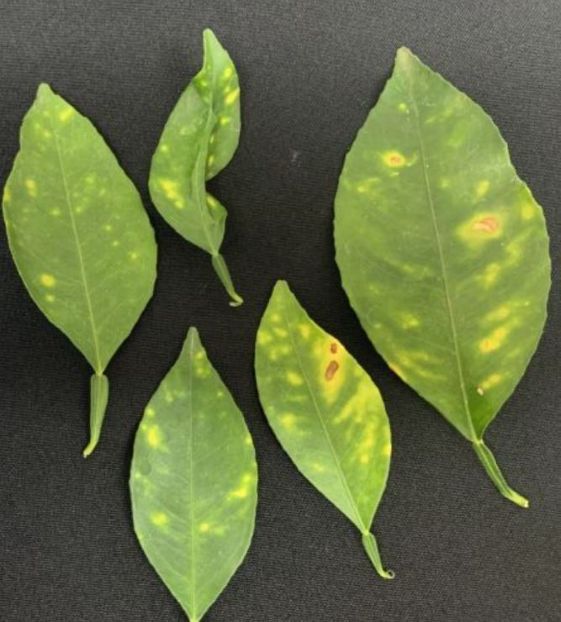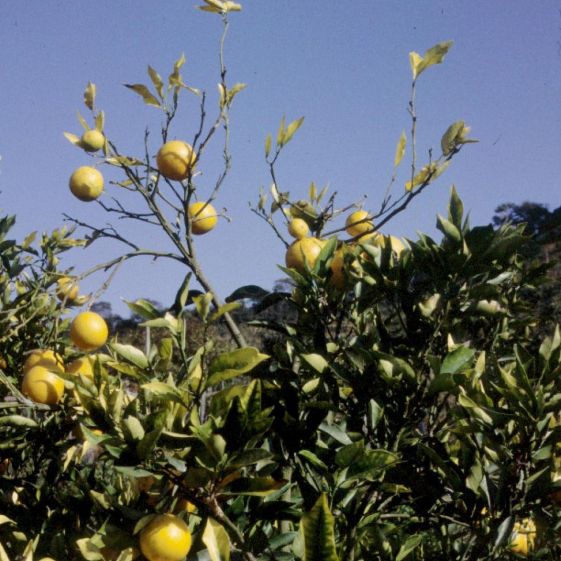Xylella fastidiosa has many names
This bacterium can infect many host plants and the disease can have different names depending on the host. A common name for this disease in citrus is citrus variegated chlorosis.
How it harms plants
Xylella fastidiosa multiplies in the water transport system in plants, blocking and damaging it. This impairs water movement within the plant, causing leaf scorching and wilting.
Symptoms can vary between hosts and in some cases, plants may have no symptoms (asymptomatic). It is important to keep in mind that symptoms can be confused with water stress, nutrient deficiencies, frost and herbicide damage.
Signs to look for in citrus trees
- Affected trees show foliar chlorosis that resembles nutrient deficiencies. This is more obvious in young leaves.
- As the infection progresses, small, light brown and raised lesions can appear on the underside of the chlorotic areas on the leaves.
- Fruit size and quality is greatly reduced.
- Affected trees show stunting and branch dieback.
The symptoms sometimes affect only a section of the tree. The plant will not normally die but will have no economic value a few years after initial infection.











